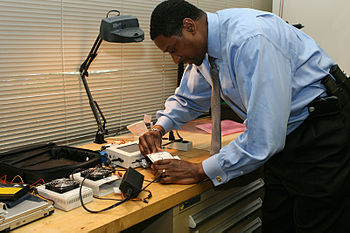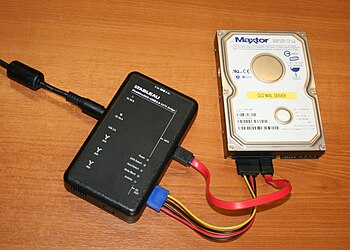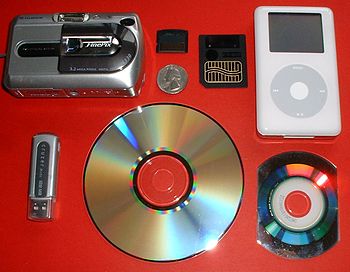 Our guest blogger is Christina Patchell (Chris), whom I met when our books were chosen as Kindle Scout winners.
Our guest blogger is Christina Patchell (Chris), whom I met when our books were chosen as Kindle Scout winners.
Chris Patchell is the bestselling author of In the Dark and the Indie Reader Discovery Award winning novel Deadly Lies. A former tech worker turned full-time author, Chris Patchell pens gritty suspense novels set in the Pacific Northwest.
Chris is out with her newest book. Woohoo! And, I invited her on to share some of her research.
Chris, I'm going to sit back and take notes.
Sweet Dreams – Fun Facts about Security Systems
“Protect your home with the best home security system.” That’s what one popular home security system provider claims. And the truth is that we all want to keep our families secure. How many of us have spent hundreds or even thousands of dollars installing home security systems and hundreds more on monitoring contracts every year? Once the systems are safely installed in our homes, many of us do something else that we think will act as a deterrent. We plant a sign in the middle of our flower beds outside of our houses that proudly lists the name of the security company whose equipment protects our homes, in the hopes that if a potential thief rolls down our street in the middle of the night, seeing the sign posted out front will compel them to drive on by. But is that true?
I was talking to a friend of mine about the kinds
Sweet Dreams – Fun Facts about Security Systems
“Protect your home with the best home security system.” That’s what one popular home security system provider claims. And the truth is that we all want to keep our families secure. How many of us have spent hundreds or even thousands of dollars installing home security systems and hundreds more on monitoring contracts every year? Once the systems are safely installed in our homes, many of us do something else that we think will act as a deterrent. We plant a sign in the middle of our flower beds outside of our houses that proudly lists the name of the security company whose equipment protects our homes, in the hopes that if a potential thief rolls down our street in the middle of the night, seeing the sign posted out front will compel them to drive on by. But is that true?
I was talking to a friend of mine about the kinds
of things I learned
while researching my latest book, Dark Harvest, and this little fun fact was one of those things that stuck in my mind long afterwards. When something goes bump in the night, the first thing I do is open my eyes and glance across the alarm to the alarm panel wondering if in my sleepy stupor, I actually managed to arm it. Through the dark I see the red light shining like a beacon, and know that it the system is armed. A deep sense of security wraps around me like a warm blanket, and I drift off to sleep once more.
But what if that little sign or sticker adhered to a window isn’t the deterrent you think it is? What if they know what I learned while I was doing my research, that there is a way to block an alarm signal from broadcasting to the monitoring station?
We’ve all heard the claim that you can find anything on the internet, right? Well, if you know where to look, you can find the frequency certain security companies use to broadcast their alerts. So, if a technologically savvy thief knows what to do, they can actually jam the frequency by blasting “white noise” to that signal, thereby preventing the alarm system from sending the alarm.
‘How is this even possible?’ you ask. Easier than you might think. There are devices, like a H.A.M. radio, to tune to the right frequency and blast a signal. A software-defined radio can also be configured onto a laptop and run from there. In essence, a software-defined radio behaves in much the same way the hardware version does, by scanning a range of radio bandwidth to detect activity on specific frequencies. Once the wireless alarm activity is found, it can be exploited by overpowering or jamming the signal issued by the alarm. Some alarms come with anti-jamming protection that can be circumvented by jamming the signal for short bursts (say 20 seconds) then turned off for a second or two, before repeating the process.
This isn’t as easy or cheap as I’m making this sound. There is a fair bit of technical know-how required to setup the system and jam a signal. Setting up a software-defined radio can cost anywhere between $1,000 and $4,000. Since some of these vulnerabilities have been exposed, companies have been hard at work putting solutions in place to stop hackers.
So, how do I keep my family safe? First, don’t make it easier for thieves by posting the sign. Let the blasting alarm be deterrent enough if they target your house in the middle of the night. Or if you really like the idea of posting a sign as a deterrent, post another alarm company’s sign in your yard and keep the bad guys guessing.
In Dark Harvest, Henry Cahill, a computer hacker with a Robin Hood complex, uses a similar technique to break into a business and search for information that will help him solve a crime. Things don’t work out for Henry quite the way he expects, but hey, that’s the kind of wrinkle that makes fiction fun.
If the ins and outs of how things works intrigues you like it does me, here are a few links if you’d like to do some reading of your own:
Hacking home alarms
Hacking alarm systems
Hacking alarm systems
while researching my latest book, Dark Harvest, and this little fun fact was one of those things that stuck in my mind long afterwards. When something goes bump in the night, the first thing I do is open my eyes and glance across the alarm to the alarm panel wondering if in my sleepy stupor, I actually managed to arm it. Through the dark I see the red light shining like a beacon, and know that it the system is armed. A deep sense of security wraps around me like a warm blanket, and I drift off to sleep once more.
But what if that little sign or sticker adhered to a window isn’t the deterrent you think it is? What if they know what I learned while I was doing my research, that there is a way to block an alarm signal from broadcasting to the monitoring station?
We’ve all heard the claim that you can find anything on the internet, right? Well, if you know where to look, you can find the frequency certain security companies use to broadcast their alerts. So, if a technologically savvy thief knows what to do, they can actually jam the frequency by blasting “white noise” to that signal, thereby preventing the alarm system from sending the alarm.
‘How is this even possible?’ you ask. Easier than you might think. There are devices, like a H.A.M. radio, to tune to the right frequency and blast a signal. A software-defined radio can also be configured onto a laptop and run from there. In essence, a software-defined radio behaves in much the same way the hardware version does, by scanning a range of radio bandwidth to detect activity on specific frequencies. Once the wireless alarm activity is found, it can be exploited by overpowering or jamming the signal issued by the alarm. Some alarms come with anti-jamming protection that can be circumvented by jamming the signal for short bursts (say 20 seconds) then turned off for a second or two, before repeating the process.
This isn’t as easy or cheap as I’m making this sound. There is a fair bit of technical know-how required to setup the system and jam a signal. Setting up a software-defined radio can cost anywhere between $1,000 and $4,000. Since some of these vulnerabilities have been exposed, companies have been hard at work putting solutions in place to stop hackers.
So, how do I keep my family safe? First, don’t make it easier for thieves by posting the sign. Let the blasting alarm be deterrent enough if they target your house in the middle of the night. Or if you really like the idea of posting a sign as a deterrent, post another alarm company’s sign in your yard and keep the bad guys guessing.
In Dark Harvest, Henry Cahill, a computer hacker with a Robin Hood complex, uses a similar technique to break into a business and search for information that will help him solve a crime. Things don’t work out for Henry quite the way he expects, but hey, that’s the kind of wrinkle that makes fiction fun.
If the ins and outs of how things works intrigues you like it does me, here are a few links if you’d like to do some reading of your own:
Hacking home alarms
Hacking alarm systems
Hacking alarm systems
Fiona-
In your writing, reading, and your everyday life, knowing the truth can help you stay one step ahead.
I hope you buy and enjoy Chris's newest book!
Let us know what you think!





























